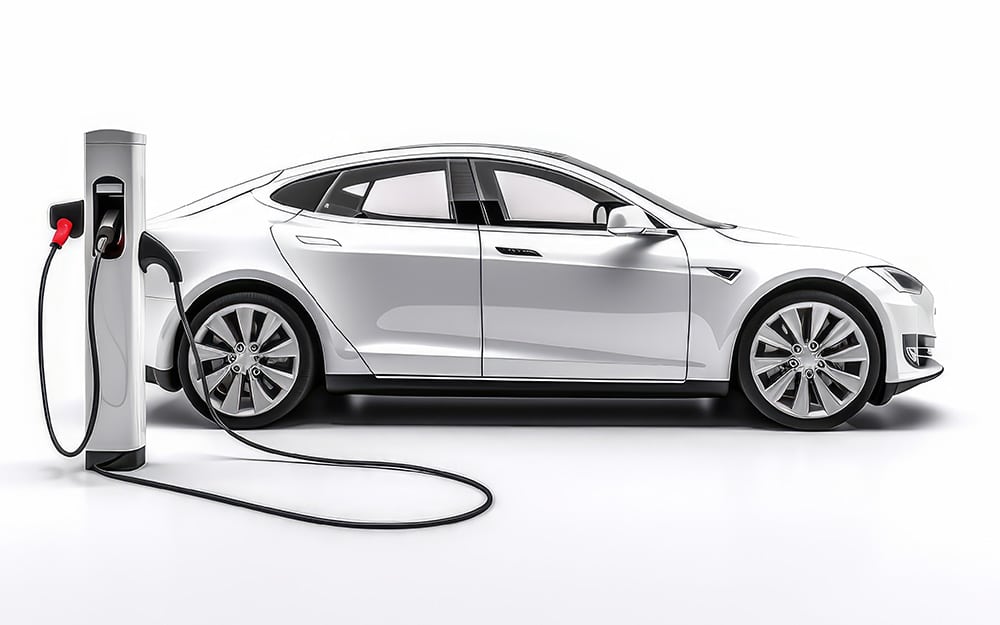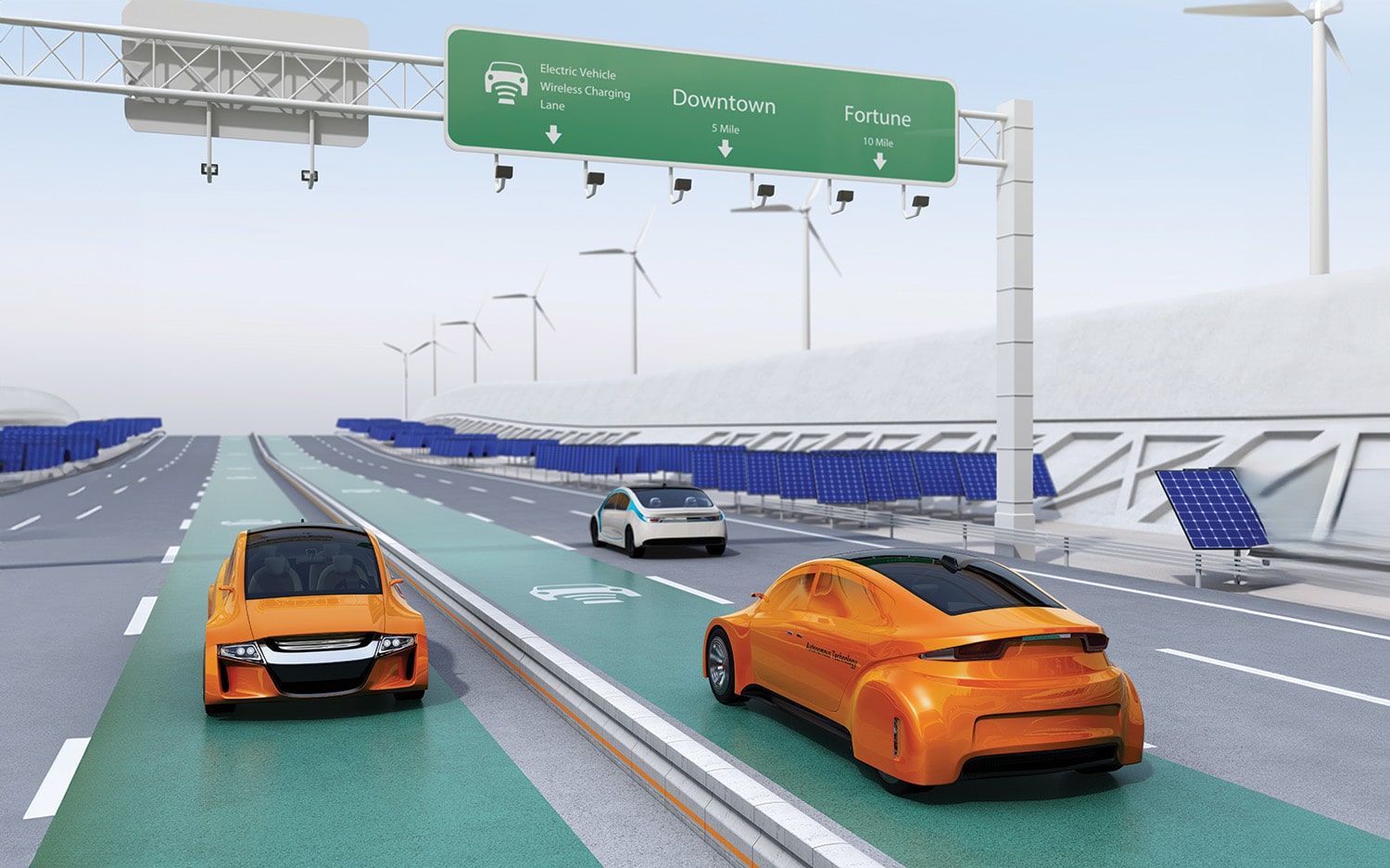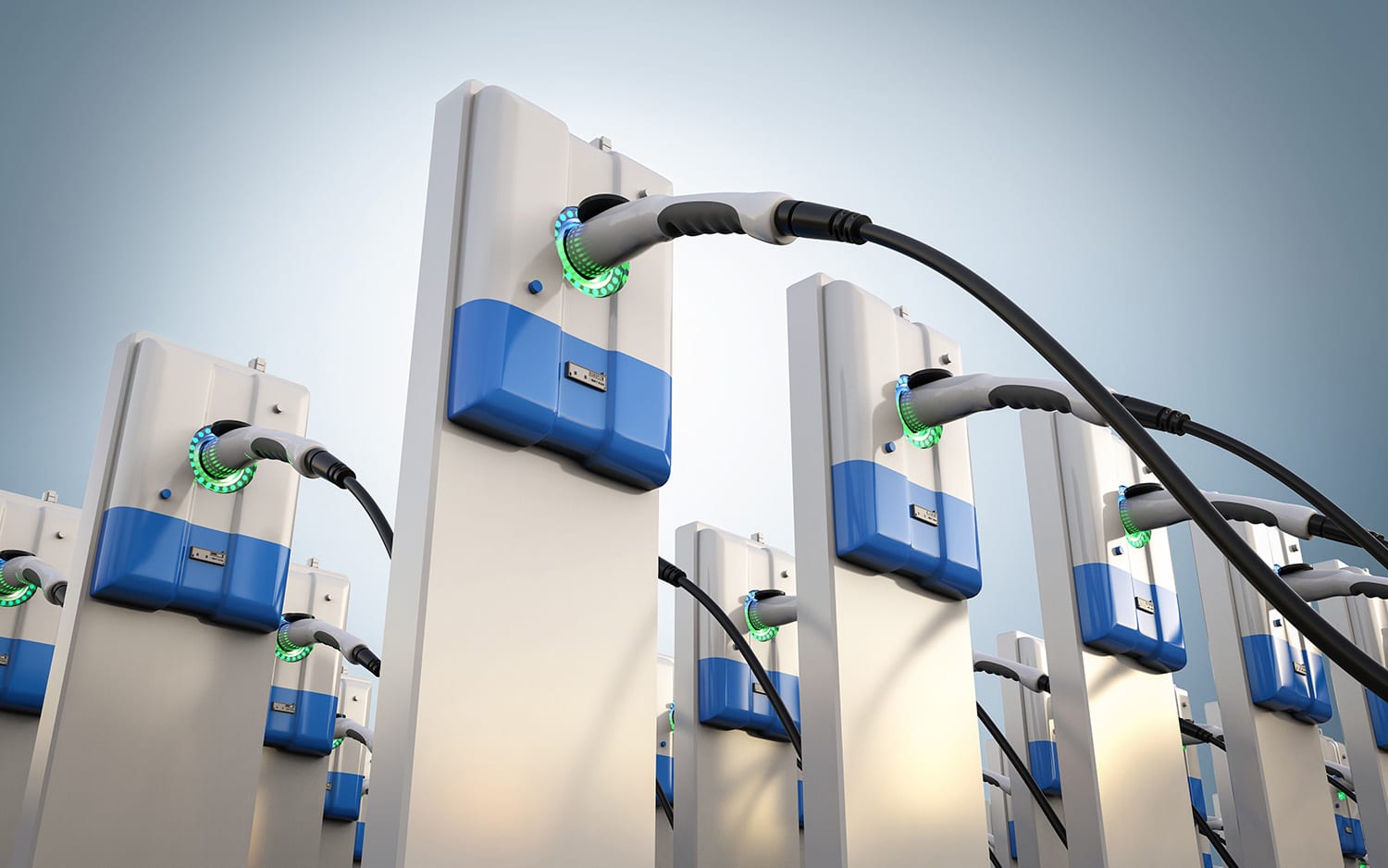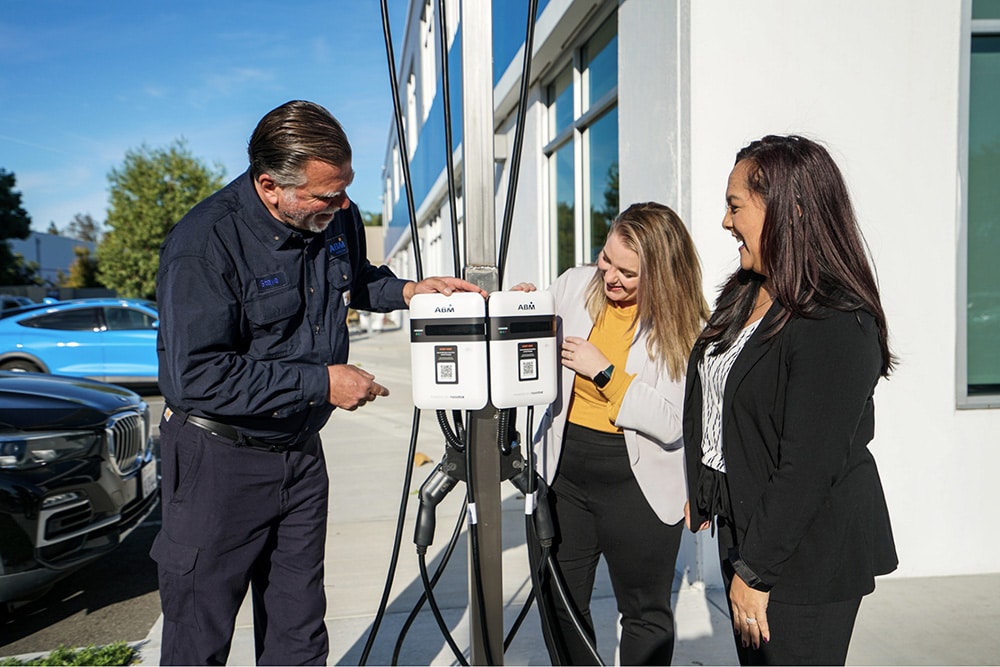
You’ve got EV questions. We’ve got EV answers.
You’ve got EV questions. We’ve got EV answers.
EV charging technology is just now becoming widely demanded, mandated, and adopted across the U.S. As a result, many facility owners and managers aren’t completely familiar with the details, specs, and requirements of implementing EVs at their facilities.
At the same time, they have reasonable concerns surrounding making a significant investment in EV charging infrastructure. They worry that the EV installation market is:
- Not yet mature.
- Fragmented.
- Full of jargon.
- A sea of sameness.
- Highly focused on software-enabled charging ports.
Furthermore, EV marketing often loses track of the primary beneficiaries of the technology: EV drivers, the environment, and the client’s business. Thus, as Mark Hawkinson, President, ABM Technical Solutions, says, “Facility owners and managers are uncertain on the best path forward, what sort of investment to expect, and the ongoing costs and management requirements for maintaining the charging systems.”
Steering the EV rollout in the right direction
In December 2021, the Biden-Harris Administration unveiled its “EV Charging Action Plan” to outline steps federal agencies are taking to standardize, streamline and support the efforts to develop and deploy EV chargers in American communities across the country.
As part of that plan, the Bipartisan Infrastructure Law includes $5 billion in funding for building a national EV charging network. “And there is not only the pressing need for increased EV charging infrastructure but also for consideration around the distribution and placement of such infrastructure,” says ABM’s Justin Halstead, Vice President, eMobility and Electrical Infrastructure.
Thus, the Biden Administration is laying the foundation for a nationwide network of EV charging infrastructure to provide a reliable, affordable, convenient, seamless user experience that is equitable and accessible for all Americans. As a result, EV charging stations are now being required across a variety of facilities and industries:
- Parking Structures – Commercial complexes, airports, shopping centers, hospitals, schools, and campuses.
- Governments & Municipalities – City, county, state, federal; public access to charging at downtown parking and shopping, and as an employer, for EV fleets.
- Commercial & Industrial Buildings – Employer workplace locations and EV fleets.
- Large Entertainment Venues – Stadiums, theme parks, and concert venues.
- Mixed-Use Facilities – Multi-tenant/multi-family building owners will need to accommodate EV drivers.
- Public & Private Fleets – Electric buses and shuttles need access to efficient charging.
In short, if you’re a facility owner, the best time to start investing in EV charging infrastructure was yesterday. The next best time is right now.
Where we go (green) from here
Beyond convenience, EV chargers are also helping these facilities meet their green building initiatives and ESG goals, including improving air quality and reducing emissions. They also support our nation’s larger goals of creating a path to net-zero emissions by 2050 and positioning U.S. industries to lead these global efforts.
With over 28,000 installed EV charging ports, ABM is the leading commercial installer of EV chargers in the U.S. our experts are empowering operators to scale with EV demand and with a strategic, sustainable infrastructure investment. ◆



Ready, Set, Plug-In
EV Readiness Perspectives




